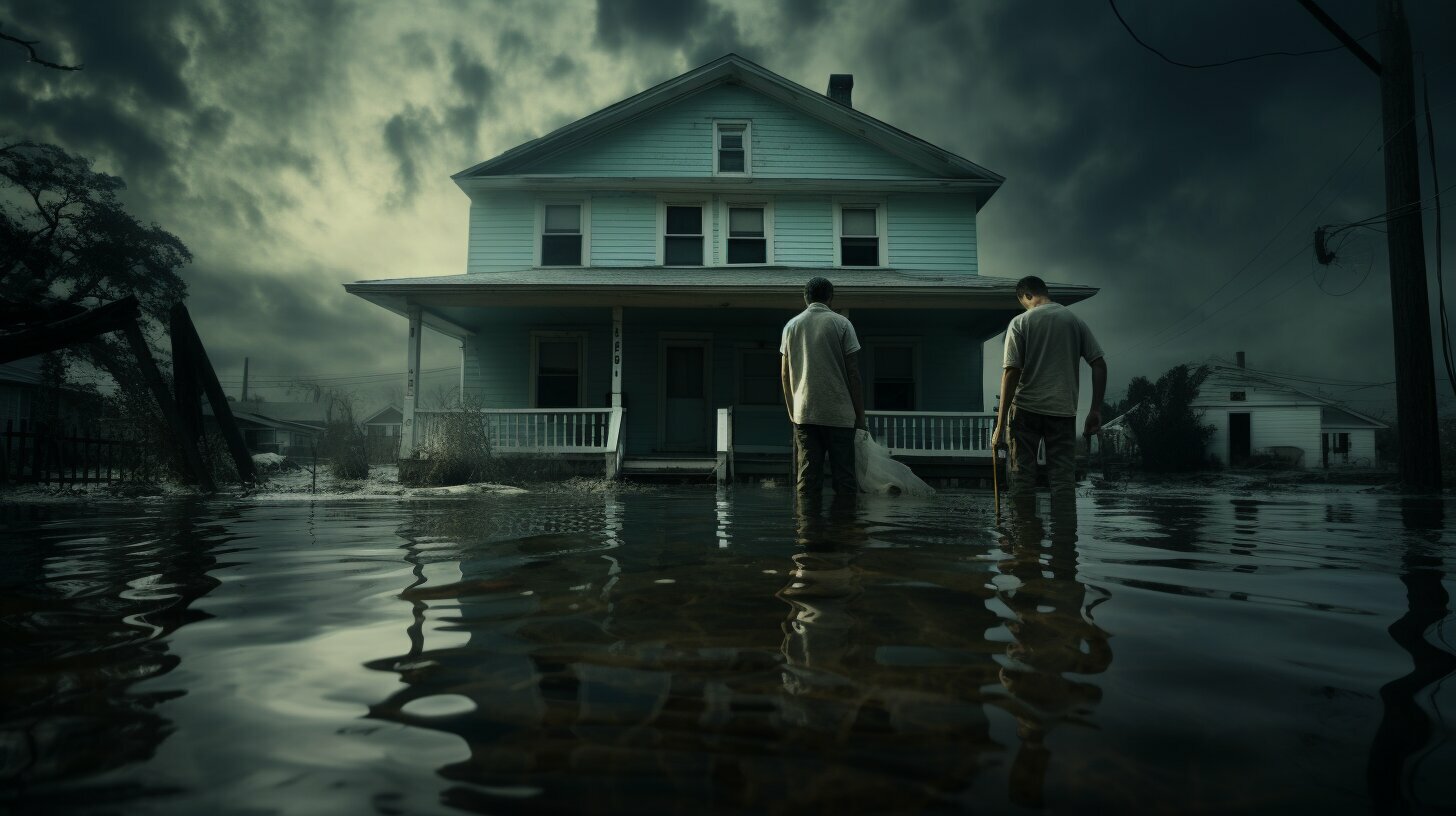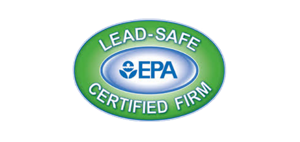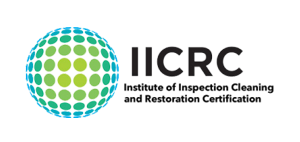Facing a flood can be overwhelming. You may wonder if cleaning after a flood is necessary. The answer is yes, it is crucial to clean and disinfect your home after a flood for safety and health reasons.
Key Takeaways:
- Cleaning and disinfecting your home after a flood is essential to prevent further damage and illness.
- Remove carpet and upholstered furniture that came in contact with floodwaters.
- Dry out flooded areas within 48 hours to prevent mold growth.
- Wear protective clothing, such as gloves and boots, during the cleaning process.
- Dispose of wet materials that cannot be cleaned and wash curtains, clothing, and bedding with hot soapy water and bleach whenever possible.
The Post-Flood Cleaning Process
The post-flood cleaning process is crucial to ensure the safety and well-being of your home and its occupants. Here are the essential steps to follow:
1. Remove Damaged Items
The first step in the flood cleanup process is to remove any carpet and upholstered furniture that came in contact with the floodwaters. These items can hold onto moisture and become breeding grounds for mold and bacteria. It is important to dispose of them properly to prevent further damage and potential health risks.
2. Dry Out Flooded Areas
Time is of the essence when it comes to drying out flooded areas. Moisture can lead to mold growth within 48 hours, so it is crucial to act quickly. Use fans and dehumidifiers to promote air circulation and speed up the drying process. If there is standing water, use a wet vacuum or pump to remove it, and then thoroughly dry the area using a mop or towels.
3. Disinfect Surfaces and Items
Once the area is dry, it is important to disinfect all surfaces and items that came into contact with the floodwaters. Prepare a solution of bleach and water (1 cup of bleach to 1 gallon of water) and use it to wipe down walls, floors, and other hard surfaces. Be sure to wear protective clothing, such as gloves and boots, while performing this task.
Table: Flood Cleaning Checklist
| Task | Notes |
|---|---|
| Remove damaged items | Dispose of carpet and upholstered furniture properly |
| Dry out flooded areas | Use fans and dehumidifiers to promote air circulation |
| Disinfect surfaces and items | Prepare a bleach and water solution for cleaning |
By following these steps and taking immediate action, you can effectively clean and restore your home after a flood. However, if there is a large amount of mold or extensive flood damage, it is recommended to consult with professionals who specialize in flood cleaning services. Remember, prioritizing safety and thorough cleaning is crucial to prevent further damage and potential health risks.
Conclusion
Cleaning your home after a flood is a vital step towards restoring safety and preventing potential health hazards. By following the proper cleaning process and taking necessary precautions, you can effectively mitigate the damage caused by a flood and ensure a healthy living environment for you and your family.
After a flood, it is important to take immediate action to minimize further damage. Start by removing any carpet and upholstered furniture that came into contact with the floodwaters. It is crucial to dry out any flooded areas within 48 hours to prevent the growth of mold, which can cause respiratory issues and other health problems.
During the cleaning process, wearing protective clothing such as gloves and boots is essential to prevent any exposure to harmful contaminants. Wet materials that cannot be cleaned should be discarded, while curtains, clothing, and bedding should be thoroughly washed with hot soapy water and bleached whenever possible.
To disinfect surfaces and items, a solution of bleach and water can be used. It is important to ensure thorough drying of all areas to prevent mold growth. If there is no standing water, fans can be employed to aid in the drying process.
However, if there is a significant amount of mold or flood damage, it is recommended to consult with professionals who have expertise in flood cleaning and restoration. They can assess the situation and provide appropriate solutions to avoid further complications.
Remember, food items that have come into contact with floodwater should be thrown away, and kitchen surfaces should be thoroughly washed and disinfected. Wet textiles should be cleaned promptly to prevent the growth of mold and mildew. Different types of stains may require specific cleaning instructions and the use of disinfectants and stain removers as needed.
With these steps in mind, you can effectively clean and restore your home after a flood, ensuring the safety and well-being of your family. Take immediate action, prioritize safety, and consider seeking professional assistance when necessary. By doing so, you can overcome the challenges posed by a flood and create a healthy living environment once again.
FAQ
Should I clean after a flood?
Yes, it is important to clean and disinfect your home after a flood to prevent further damage and illness.
What should be the first step in the post-flood cleaning process?
The first step is to remove carpet and upholstered furniture that came in contact with the floodwaters.
How long do I have to dry out flooded areas to prevent mold growth?
It is crucial to dry out any flooded areas within 48 hours to prevent mold growth.
Should I wear protective clothing during the cleaning process?
Yes, it is recommended to wear protective clothing such as gloves and boots during the cleaning process.
What should I do with wet materials that cannot be cleaned?
Wet materials that cannot be cleaned should be thrown away.
How should I clean curtains, clothing, and bedding that came in contact with floodwater?
Curtains, clothing, and bedding should be washed with hot soapy water and bleached whenever possible.
How should surfaces and items be disinfected after a flood?
Surfaces and items should be disinfected using a solution of bleach and water.
How can I speed up the drying process after a flood?
If there is no standing water, fans can be used to help with the drying process.
When should I consult professionals for mold or flood damage?
It is recommended to consult with professionals if there is a large amount of mold or flood damage.
What should I do with food items that have come in contact with floodwater?
Food items that have come in contact with floodwater should be thrown away.
How should I clean kitchen surfaces after a flood?
Kitchen surfaces should be thoroughly washed and disinfected.
How soon should wet textiles be cleaned after a flood?
Wet textiles should be cleaned as soon as possible to prevent mold and mildew growth.
How should different types of stains be cleaned after a flood?
It is important to follow specific cleaning instructions for different types of stains and use disinfectants and stain removers as needed.









